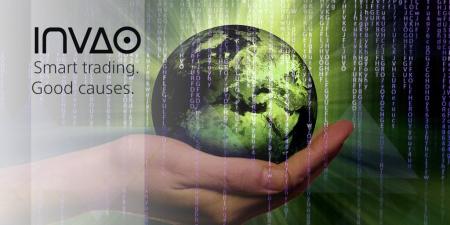Although blockchain markets are developing rapidly, the trading infrastructure still has some inefficiencies compared to traditional financial markets. This creates opportunities to generate arbitrage profits using Artificial Intelligence.
Arbitrage trading is a form of buying an asset in one market and simultaneously selling it in another market at a higher price. Traders profit from the temporary difference in price. Most of these price differences are due to market inefficiencies. As some exchanges proceed slower to establish movements than others, currency pairs and spreads frequently differ across multiple exchanges.
Institutional trading firms have been using arbitrage strategies for decades, but as markets have become more efficient, generating arbitrage profits has become challenging. Ahmed Jacob, Dubai-based Managing Partner and CTO of INVAO, said: “As blockchain markets are still in the early stages of their development cycle, exchange infrastructure still has room for further improvement compared to traditional financial markets, creating opportunities for arbitrage traders to make generous profits in their trading.”
Even though blockchain markets are only ten years old, the landscape has become much more professional and efficient over the past two years. “While there were only around 20 digital exchanges in 2011, there are now more than 200. Many of these exchanges show high levels of liquidity with small spreads and high volumes,” explains Jacob. “Higher liquidity means price differences across exchanges are quickly arbitraged, that’s why speed is so important.”
High-frequency trading systems can execute trades within milliseconds to generate arbitrage profits
Arbitrage opportunities appear in a very short time frame and at very low margins. According to a Bitwise research paper, more than 50 percent of price differences greater than 1 percent are arbitraged within just 5 seconds. 90 percent of such price differences are arbitraged within 35 seconds. As humans are not quick enough to react on these opportunities, institutional trading firms use computerized high-frequency trading systems (HFT) that can carry out trades within a fraction of a second.
HFT systems can not only react to the arrival of new information much quicker than humans, but they also have better access to the market. Since they don’t have to go through a broker to execute trades. A broker would choose to execute a trade at the exchange where commissions are very high. HFTs, on the other hand, look at all prices for a given asset on all exchanges and then make a decision.
INVAO has developed their own HFT algorithm for arbitrage trading that can exploit price differences on and between digital exchanges. Jacob explains, “Our trading platform is connected to a large number of digital exchanges giving us open access to the market.
Artificial Intelligence distributes funds based on pre-defined parameters
Jacob explains that INVAO’s HFT systems are based on machine learning which does most of the work automatically. An AI-module determines which trading strategy is the most profitable or has the lowest risk.
“This also eliminates the human factor, as trades are solely based on pre-defined parameters, not on the trader’s emotions,” says Jacob. “The AI-module works like the brain and the HFT trades are the muscles. The AI-module identifies how to allocate funds and the HFT part completes the trades through hundreds of small transactions each day.”
INVAO’s approach has proven highly profitable. The company’s latest investment product – the IVO Blockchain Diversified Bond (ISIN: LI0471823018) – has generated a portfolio return of 131,40 percent in the first seven months of 2019. That’s 71,43 percent more than its benchmark index, the CCi30, which includes the 30 largest digital currencies according to their market capitalization.
The IVO bond is based on a diversified portfolio of blockchain assets. To boost the portfolio return, INVAO leverages its AI-based HFT trading engine. “As arbitrage trading is part of our strategy, we are less dependent on price volatility,” explains Jacob. “Even if asset prices go up or down, arbitrage trading isn’t affected, since the profits are generated from the difference in price across exchanges and not from the actual price movement of the asset.”
Even though this form of trading is highly profitable, arbitrage trading is not completely risk-free, Traders can still face an execution risk. There is always a small possibility that a trading opportunity can disappear quickly if the engine is not able to carry out trades quick enough. Jacob says, “To reduce the execution risk, our algorithm includes multiple layers of defense that ensure the machine only completes the trades if it can execute all steps at the required volumes.” He adds, “Our algorithm also considers transaction costs. Exchanges charge fees for buying and selling assets. Considering the low margins, transaction costs can quickly eat up the arbitrage profit gains. Our algorithm avoids this by including the fees into the decision-making process.”



